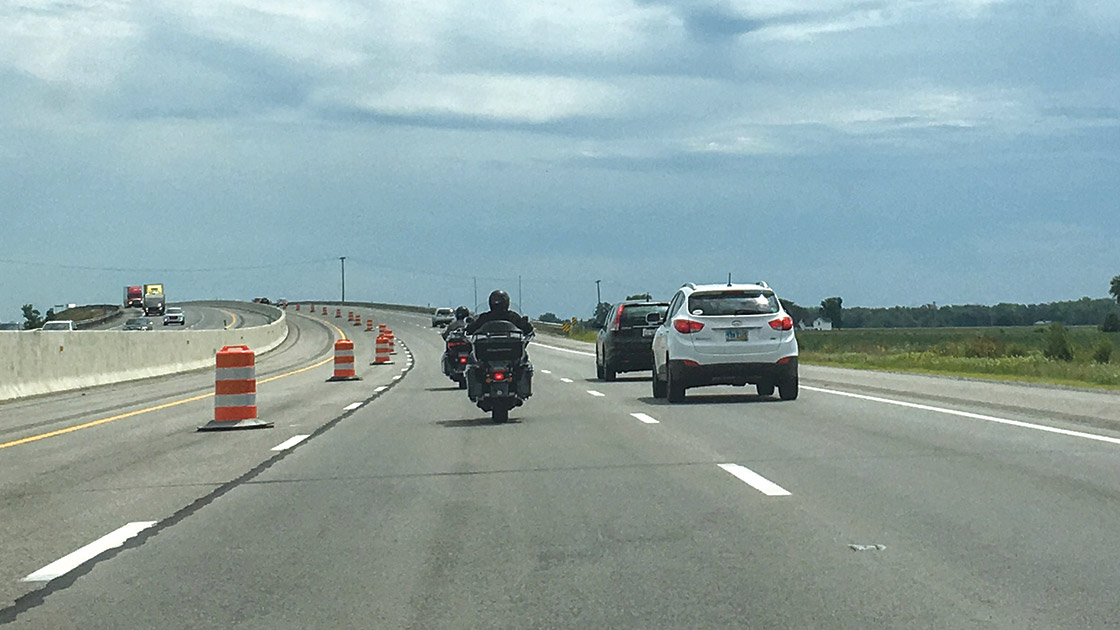Insurance payouts still rising for motorcyclist injuries under Michigan's weak helmet law
May 8, 2018

It's springtime in Michigan, and that means motorcyclists will be pulling their bikes out of storage and, in many cases, hitting the road without a helmet. Six years after the state weakened its helmet use law to exempt most riders, a new HLDI analysis indicates that the average insurance payment for injuries to motorcyclists in crashes has risen by 40 percent, compared with losses in nearby control states.
May marks the start of the seventh riding season in Michigan since lawmakers relaxed the motorcycle helmet law to cover only riders younger than 21. Motorcyclists 21 and older may ride without a helmet if they have either passed a motorcycle safety course or have held the motorcycle endorsement on their driver's license for at least two years. In addition, riders who choose not to wear helmets must have at least $20,000 in medical payment coverage and higher coverage for any passengers who ride unhelmeted, too. More motorcyclists are opting for the higher policy limits since the law change, HLDI has found.
This is HLDI's third look at the effects of Michigan's partial helmet law repeal. A 2013 HLDI analysis found that the average insurance payment on a motorcycle injury claim rose 22 percent in Michigan after the helmet law change took effect. The analysis controlled for policy limits to account for the new medical payment insurance requirement. HLDI updated the study in 2016 to add three more years of loss data and found a 37 percent increase in insurance losses. The latest study adds a fifth year of data to cover the 2010–16 May-to-September riding seasons.
HLDI examines motorcycle insurance loss data under collision and medical payment, or MedPay, coverages. Motorcycle collision coverage insures against physical damage to a motorcycle in a crash when the rider is at fault. MedPay covers injuries sustained by the motorcycle operator.
Insurance losses are measured as claim frequency, claim severity and overall losses. Claim frequency is the number of claims for a group of vehicles divided by the exposure for that group, expressed in the study as claims per 1,000 insured vehicle years. An insured vehicle year is one vehicle insured for one year, two vehicles insured for six months each. Claim severity is the average loss payment per claim.
For all three analyses, Illinois, Indiana, Ohio and Wisconsin were used as control states because their laws on helmet use didn't change during the period. Analysts controlled for motorcycle age and class, rider demographic factors, geographic factors and weather. They also controlled for insurance policy limits for MedPay coverage.
A separate analysis that didn't take into account policy limits found that MedPay claim severity was 68 percent higher in Michigan after the law change, compared with the control states.
"With each year, the evidence against Michigan's weakened motorcycle helmet use law continues to mount," says Matt Moore, senior vice president of HLDI. "If lawmakers in Lansing are committed to the Wolverine state's 'Toward Zero Deaths' goal, requiring all motorcyclists to wear helmets is one proven way to save lives."
HLDI data don't include information on the type of injury or where a crash occurred. In this analysis, Michigan crashes are crashes of motorcycles insured and garaged in the state. Likewise, the control-state crashes are only crashes of motorcycles insured and garaged in those states. There also is no way to know how many of the claims involved unhelmeted motorcyclists.
Weakening Michigan's helmet law also has been associated with increases in the number of head injuries among hospitalized trauma patients and the proportion of injured riders with skull fractures, a 2016 study by IIHS and the University of Michigan found (see "Head injuries rise as riders ditch helmets in Michigan," Sept. 1, 2016). A separate study published in The American Journal of Surgery in 2016 found that the average acute care cost of unhelmeted riders at a single Michigan trauma center was nearly $28,000, 32 percent higher than for helmeted riders. What is more, the Spectrum Health Butterworth Hospital study found that 10 percent of riders involved in a crash who weren't wearing helmets died, compared with 3 percent of riders involved in a crash who wore helmets.
Michigan is one of 28 states that have helmet laws covering only some riders, usually those under 18. Illinois, Iowa and New Hampshire have no helmet requirements. Only 19 states and the District of Columbia require helmets for all motorcyclists.
The National Highway Traffic Safety Administration estimates that helmets cut the risk of a motorcycle fatality by 37 percent.
Estimated increase in medical payment claim severity after Michigan helmet law change Michigan vs. control states, 2010–16